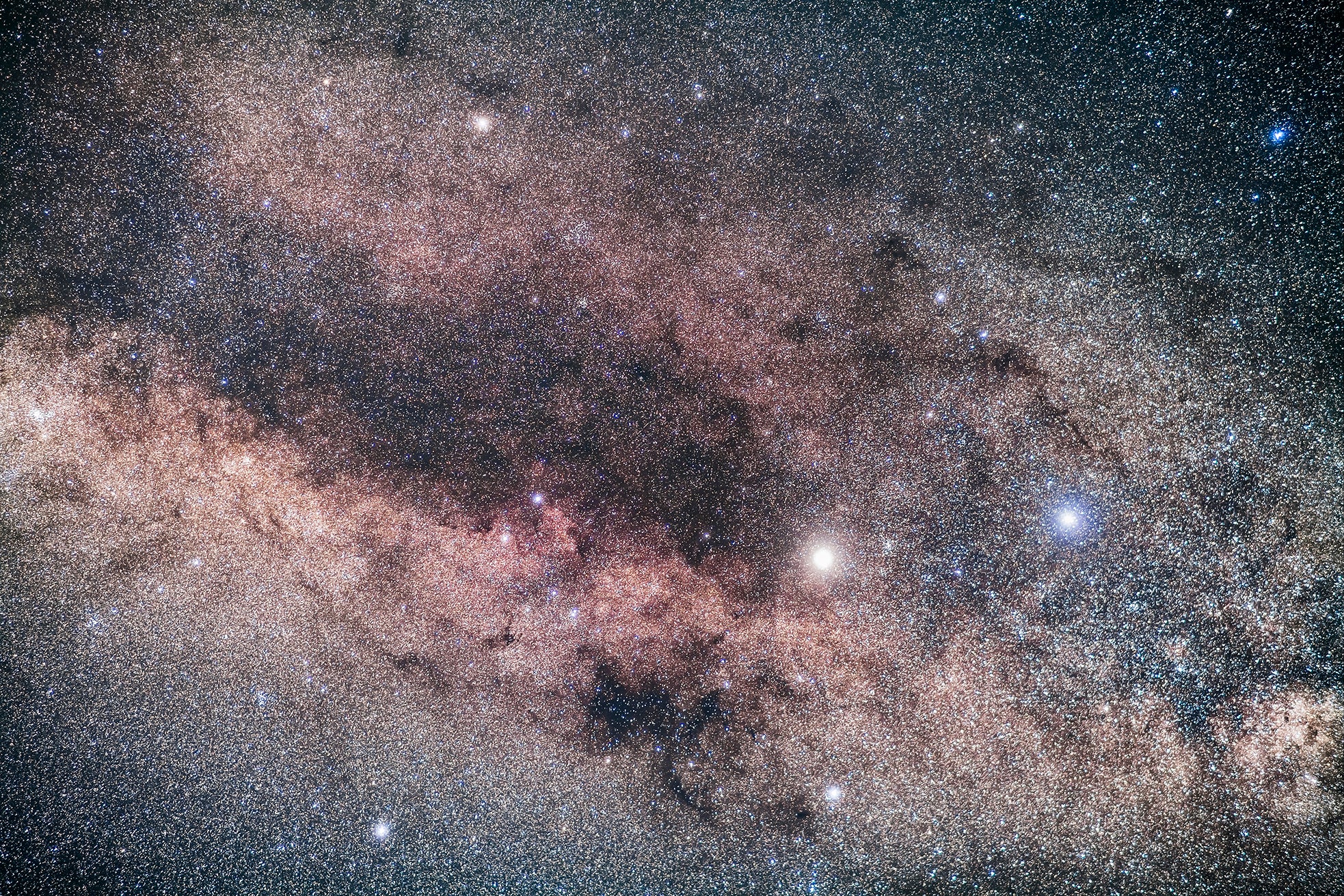
In astronomy, we tend to use miles or kilometers for nearby objects like the Moon and Venus, and light-years or parsecs for star distances. Parsec is street slang for professional astronomers but usually bewildering to the public, since it’s based on angles rather than tape-measure-like distances. So, visualizing cosmic vastness starts with tackling that term from a new angle.
Your traveler’s guide to parsecs begins by noting that two Moon-widths subtend a 1°-wide angle on the sky. And 90° is the distance from the horizon to the zenith overhead. Easy, so far. If we sliced the Full Moon into 30 equal sections, each would be 1 minute of arc (1′). That angle also happens to be the human 20/20 visual resolution limit. It’s the angular separation between markings that distinguish an F from an E on the Snellen eye chart. One arcminute is also roughly the diameter of Venus when it’s closest to us, like when it transits the Sun.
A huge lunar crater 72 miles (116 kilometers) across appears 1/30 the Moon’s diameter, or again 1′. But a crater only about a mile (1.6 km) wide takes us to our next important unit, the arcsecond (“), roughly the visibility limit of backyard telescopes. We astronomers grew up with arcseconds as easily as learning our ABCs. We use the measurement routinely to express close separations. For example, the colorful components of the gorgeous double star Albireo are 34” apart. Still, an arcsecond is a truly tiny angle — the width of a dime as seen from 2.5 miles (4 km) away.
It’s also the average gap between the Sun and Earth if viewed from 3.26 light-years away, making that distance special enough to merit its own term: a parsec.
Now comes the good stuff, which uses that Earth-Sun separation of 93 million miles (150 million km), commonly called an astronomical unit or AU. As it happens, there are about 63,000 AU in a light-year. And there are also very nearly 63,000 inches in a mile. That coincidence offers a surprising scale model for illustrating celestial distances.
Start by representing our Sun as the period at the end of this sentence. In reality, more than a million Earths could fit inside a hollow Sun. But if the Sun is the size of that dot, then Earth would only boast the size of a bacterium and be located 1 inch (2.54 centimeters) away. Now let’s enter our model. We’ll gaze at the cosmos from our microscopic planet and ponder the distance to the nearest bright star, Alpha Centauri.
It’s 4.35 light-years away in real life, which equals about 275,000 AU. Using our scale model, Alpha Centauri would be a dot 275,000 inches (698,500 cm) from our tiny Earth, which works out to 4.34 miles (6.985 km). Same number! If you’re still with me, you’ve seen that if the Sun is the period at this sentence’s end, the nearest star is a duplicate dot 4.34 miles away. We’re now understanding celestial architecture as a realm of astounding, breathtaking, inconceivable emptiness.
Let’s let this sink in. If we represent Earth as a microscopic bacterium, the Sun is a decimal point 1 inch from it, and the stars are dots a few miles apart. The main point is that when Earth is the size of a germ, then on that scale, any object’s distance in light-years can be accurately represented using that same figure in miles. (Of course, it doesn’t work out as neatly in kilometers.)
Here’s what’s truly amazing. On that scale, the nearest spiral galaxy would lie 10 times farther than the real distance between Earth and the Moon. And the closest galaxy cluster, the Virgo group, would sit among the asteroids of the main belt.
The takeaway: Even if you represent Earth with something too small to be visible, a scale model of our cosmos becomes astronomical in size.
And a second takeaway: This model only attempts to visualize the known, visible universe. Cross over to the unobservable (but majority) of the cosmos, where infinity possibly prevails, and everything on this page might get tossed into a wastebasket labeled “hopeless understatement.”









